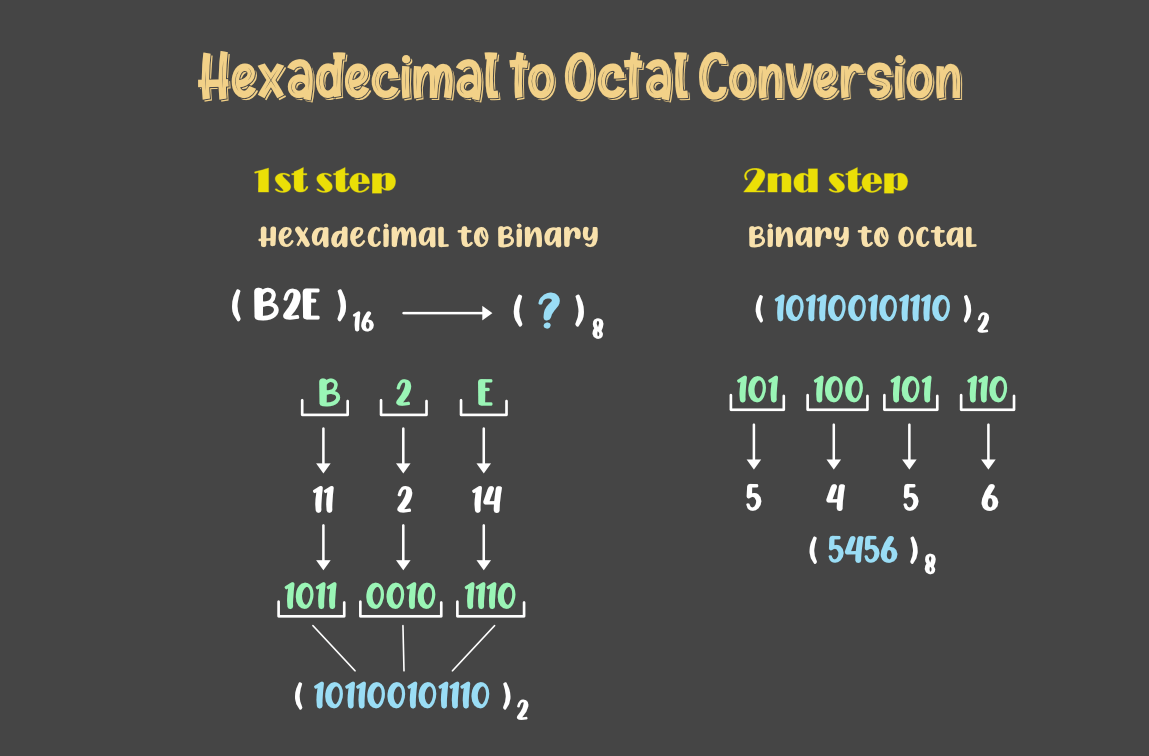Hexadecimal To Octal Converter
How to convert a hexadecimal number to the octal number?
Converting a hexadecimal number to octal involves an intermediate step through binary representation. First, convert each hexadecimal digit to its 4-bit binary equivalent. Next, group the binary digits into sets of three, starting from the right. Then, convert each set of three binary digits to its octal equivalent. Ensure that leading zeros are added to complete each set. Finally, concatenate the octal equivalents to obtain the final octal representation. Stress the importance of accurately converting to binary and grouping in sets of three for a precise hexadecimal to octal conversion.
We need to follow two steps to make the conversion. Firstly, we have to convert hexadecimal to the binary number and then we need to convert this binary number to the octal number. Here is an example given below:

An example of hexadecimal to Octal conversion:
(A7.62)16 = (?)8
| Hexadecimal= | A | 7 | . | 6 | 2 |
|---|---|---|---|---|---|
| Arrow= | ↓ | ↓ | . | ↓ | ↓ |
| Chunk= | ________ | ________ | . | ________ | ________ |
| Binary= | 1 0 1 0 | 0 1 1 1 | . | 0 1 1 0 | 0 0 1 0 |
Binary result is:(10100111.01100010)2
| Binary= | 0 1 0 | 1 0 1 | 1 1 1 | . | 0 1 1 | 0 0 0 | 1 0 0 |
| Chunk= | _______ | _______ | _______ | . | _______ | _______ | _______ |
|---|---|---|---|---|---|---|---|
| Arrow= | ↓ | ↓ | ↓ | . | ↓ | ↓ | ↓ |
| Octal= | 2 | 4 | 7 | . | 3 | 0 | 4 |
Final Octal result is: (247.304)8
Hexadecimal to octal conversion table:
| Hexadecimal | Octal |
|---|---|
| 0 | 0 |
| 1 | 1 |
| 2 | 2 |
| 3 | 3 |
| 4 | 4 |
| 5 | 5 |
| 6 | 6 |
| 7 | 7 |
| 8 | 10 |
| 9 | 11 |
| A | 12 |
| B | 13 |
| C | 14 |
| D | 15 |
| E | 16 |
| F | 17 |